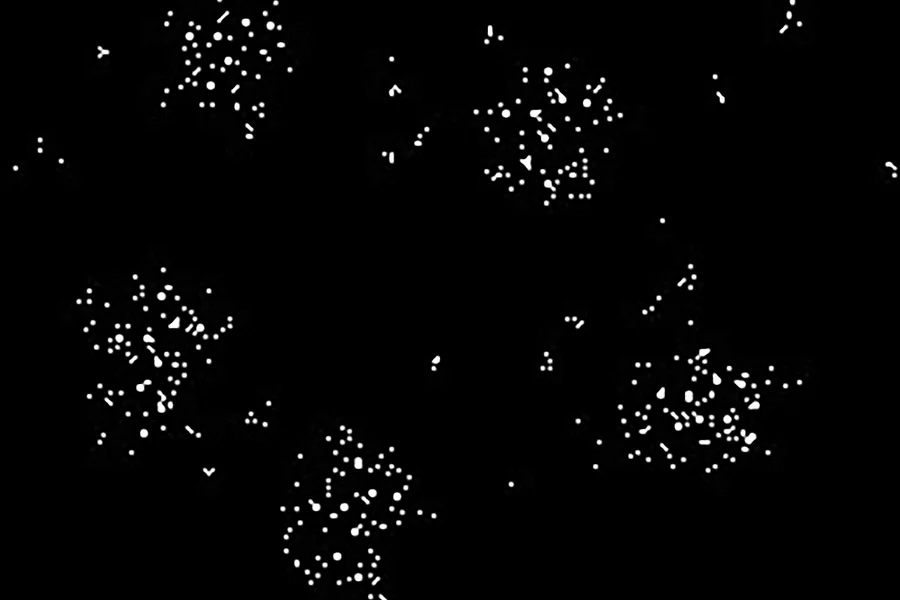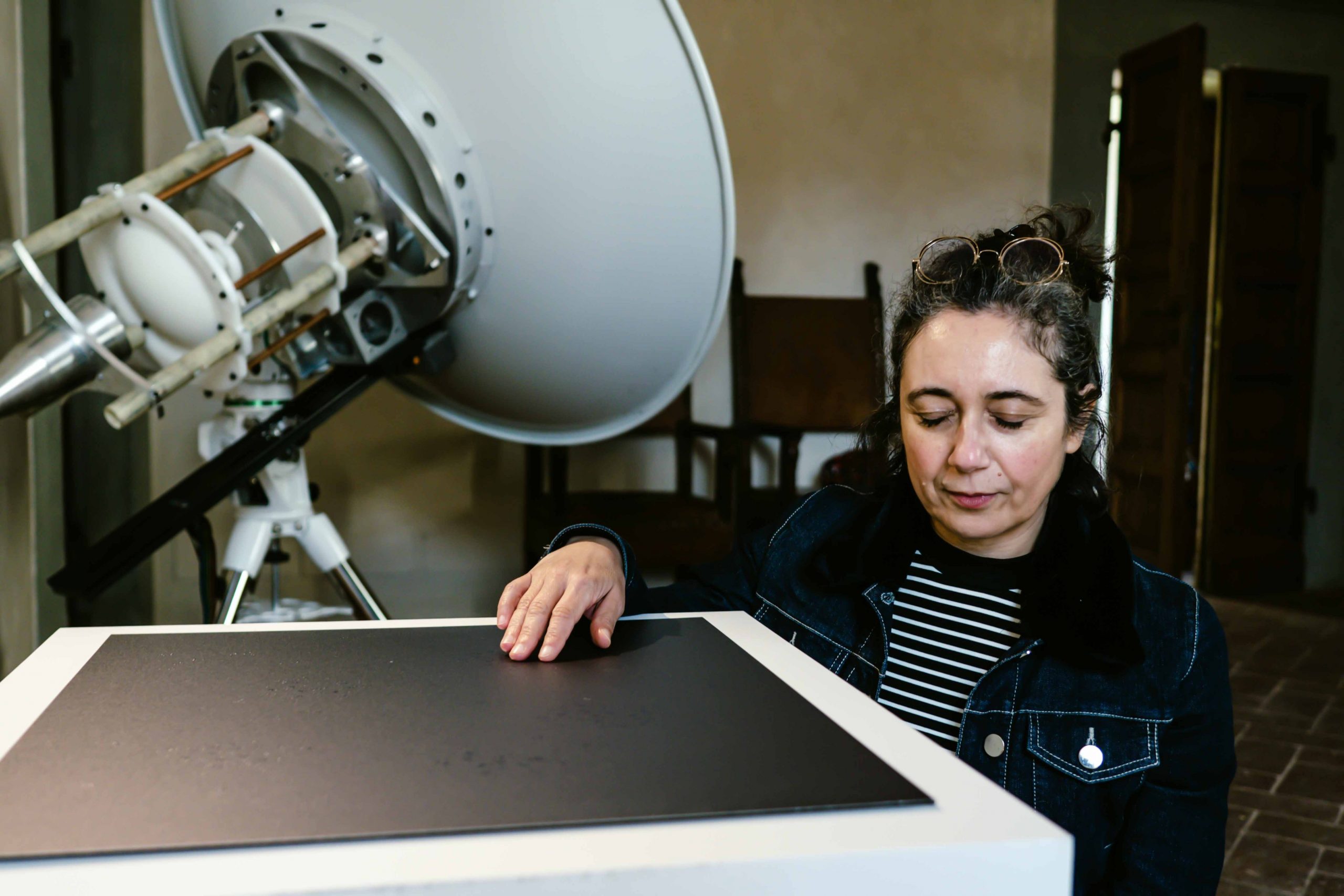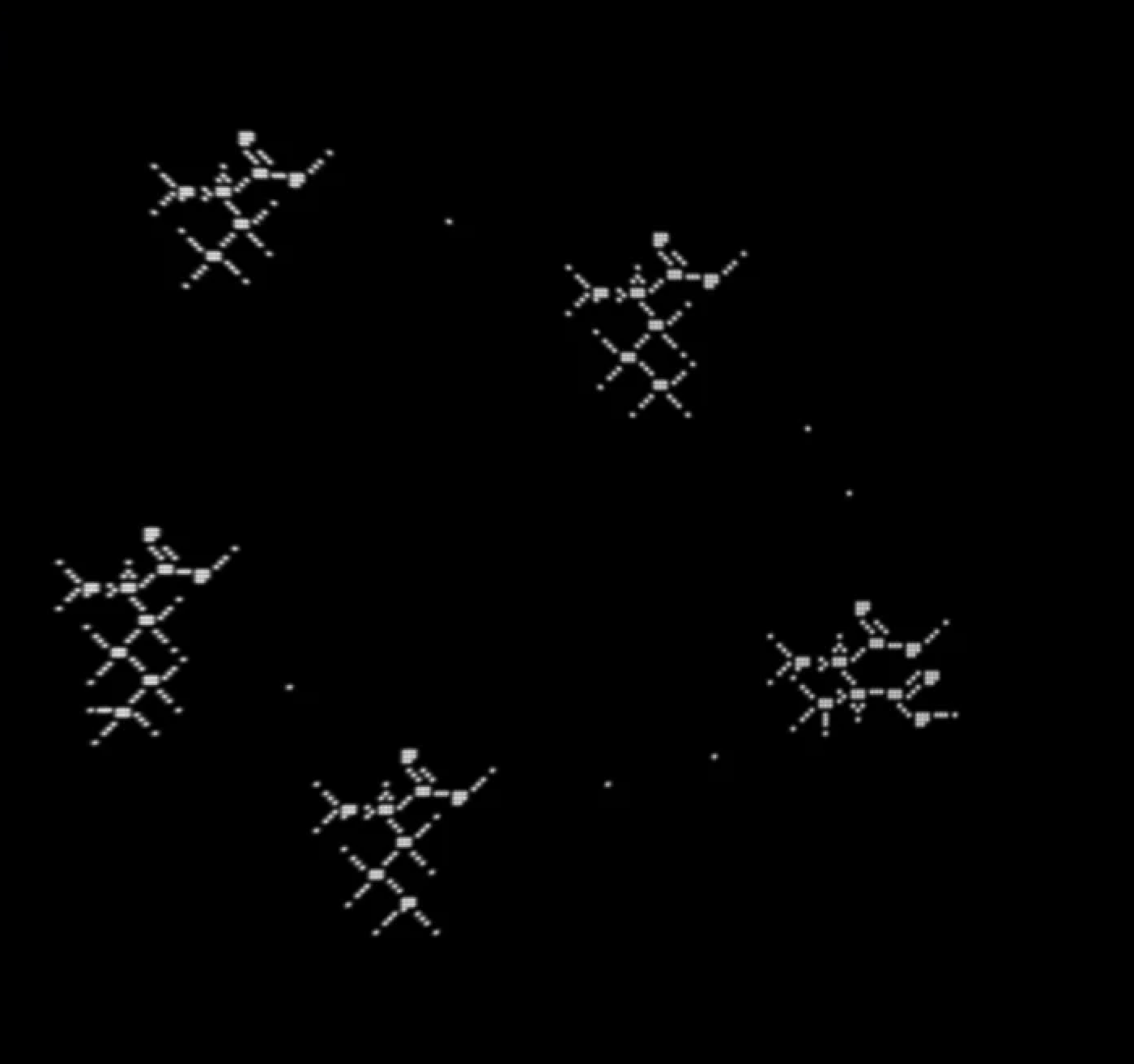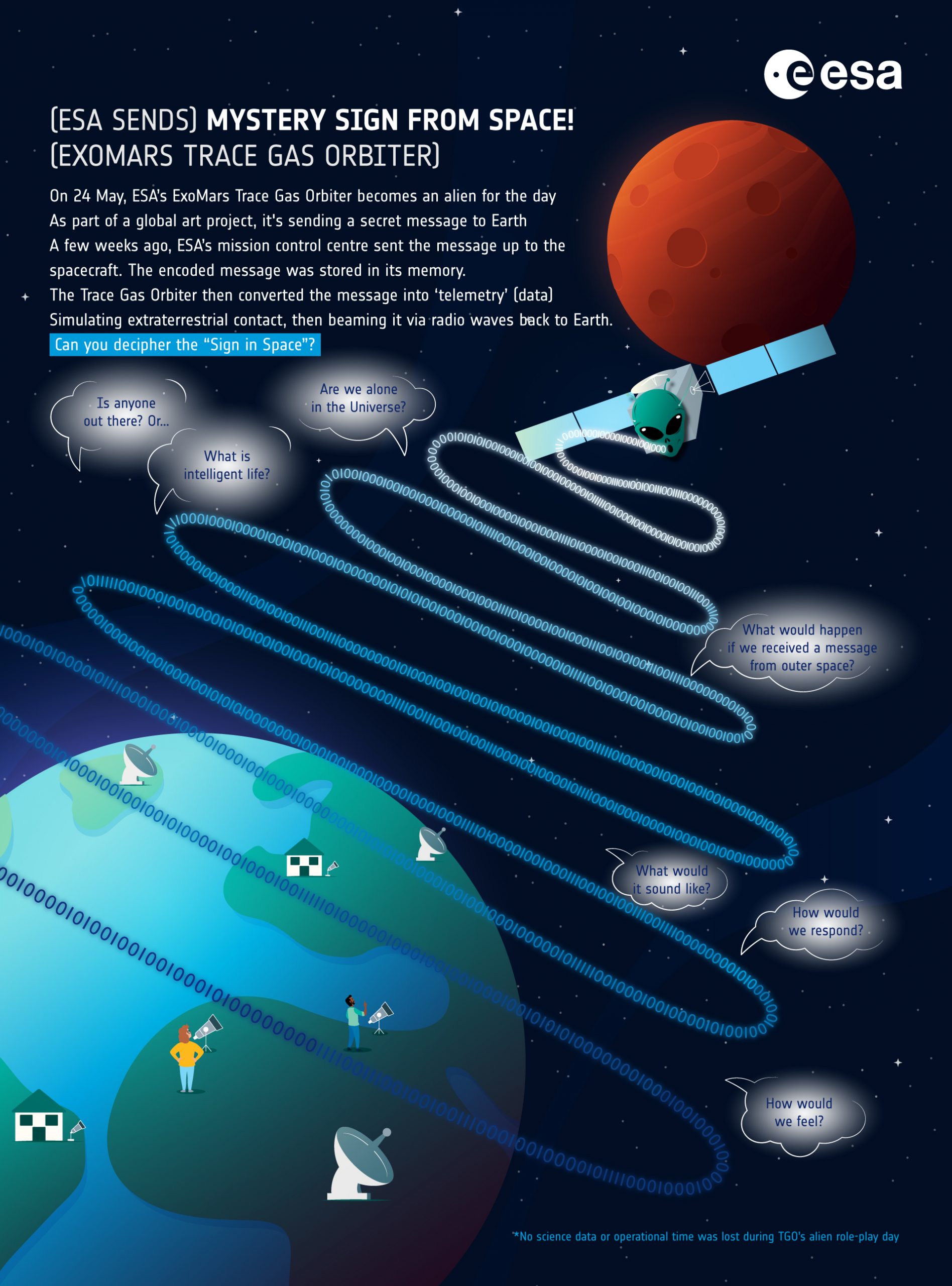Their tenacity unravelled the mysterious sign from space – an image of five amino acids.
This family’s determined efforts are part of the multidisciplinary art project ‘A Sign in Space’ aimed at deciphering a cryptic signal from ESA’s ExoMars Trace Gas Orbiter (TGO) and its meaning.

Artist’s impression of ESA’s ExoMars Trace Gas Orbiter detecting the green glow of oxygen in the martian atmosphere. Credits: ESA
While the message was a simulation crafted by a small group of astronomers and computer scientists led by an artist on Earth, the lessons learned from it can prepare humankind for what we might face during a real first contact with an alien civilisation.
The cooperative challenge directed by media artist Daniela de Paulis with the support of ESA, the SETI Institute and the Green Bank Observatory is not over yet. The interpretation of the message, like any art piece, remains open.
Citizen scientists set to the task
Around two million humans downloaded the signal within the first week of its interception by three radio astronomy observatories on Earth. In just 10 days, a community of 5000 citizen scientists gathered online and managed to extract the message from the raw data of the radio signal.

Starmap, the image extracted from the raw data of the radio signal transmitted by ESA’s Trace Gas Orbiter. Credits: A sign in space
This virtual microsociety visualised the signal as an image with white dots against a black background. They named it Starmap, and since then people from all backgrounds and nationalities have been sharing hundreds of interpretations – from translations into braille and morse code, to 3D objects, origami and fascinating visuals experimenting with the binary code.

Daniela de Paulis senses with her hand the Starmap signal translated into braille as part of her “Inner worlds, outer spaces” exhibit in Italy. Credits: Giulia Lenzi
Message decoded
It took the perseverance of a father and his daughter to solve the cosmic puzzle. On 7 June 2024, Daniela received the decoded message from Ken and Keli Chaffin. The US citizens explained that it was a simple image with five amino acids in a molecular diagram with a few pixels in between.
“Ken and Keli ran simulations for hours and days on end, following their intuition and persevering beyond despair. These are extraordinary people who took up the task with great motivation and faith both in their instinct and knowledge,” explains Daniela.
Ken, a retired software developer and musician, worked every single day on his computer committed to finding the solution. “When the results didn’t come, his daughter Keli encouraged him to carry on and to follow his intuition,” adds Daniela.
“There was something in their search beyond rationality, close to obsession. If we ever receive a signal from an intelligent civilisation, we will need visionary people like them,” she believes.
Ken and Keli discovered that the message contained movement, suggesting some sort of cellular formation and life forms. Amino acids and proteins are the building blocks of life. “They successfully found the ingredients of the recipe, but now it is time to interpret it,” says Daniela.
Longing for meaning
The cryptic signal beamed from Mars by the European orbiter was just the starting point in a quest for meaning. The artist and collaborators behind ‘A Sign in Space’ are taking a step back and witnessing how citizen scientists are shaping the challenge on their own.
Could we collectively make sense of something entirely unfamiliar to us? The organisers invite a vibrant community of curious minds to give meaning to something detached from human-centred beliefs.
“I am not interested in the solution, but I am rather fascinated by the process of a complex society trying to give meaning to reality,” says Daniela.
Whether the simulated alien communication is a recipe for destruction or a peaceful message, the project underlines the philosophical and societal aspects that come into play when humankind searches for extraterrestrial intelligence.
Join the community and contribute your ideas on the online Discord platform.




Discussion: 2 comments
Perhaps new progress after this decoding https://cdn.discordapp.com/attachments/1111404329694400542/1293655665524342794/ASIS_1.jpg?ex=671a9f39&is=67194db9&hm=7fd5c2ff226d41b8a14b66183c9b4bab6dd5bc5cd0a3cfa3341c3a9dfb2c51b2&
Amazing that a father and daughter had such determination to solve a very difficult problem. We need more people like them.